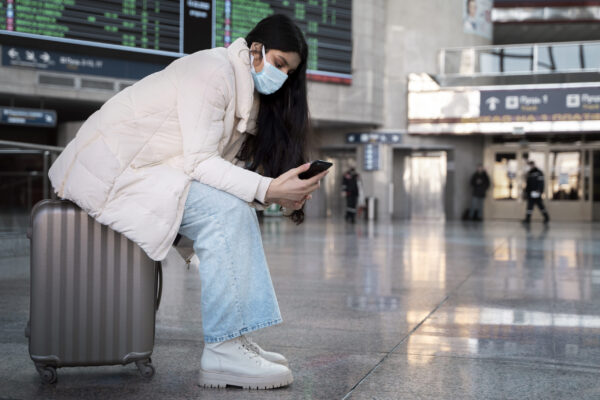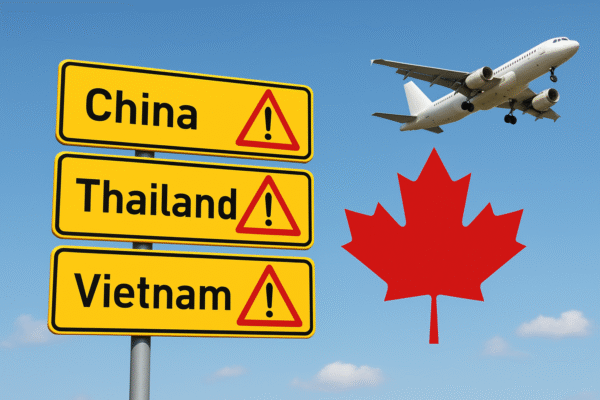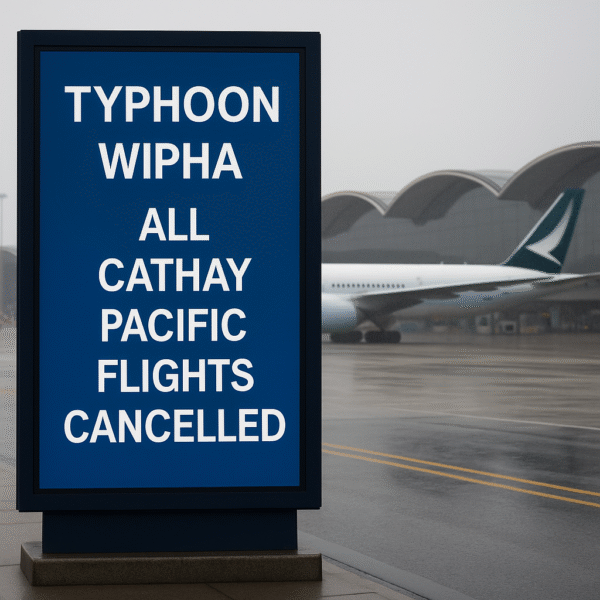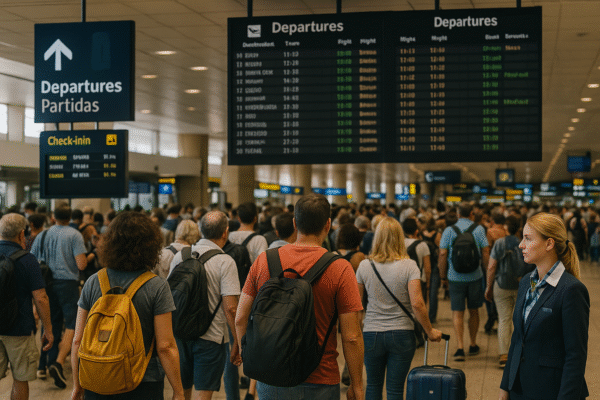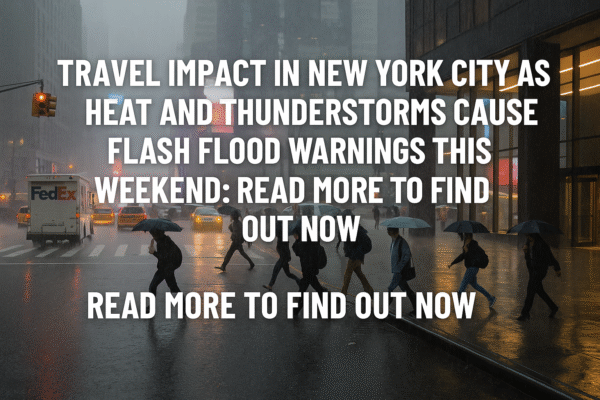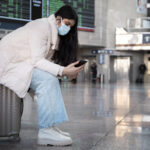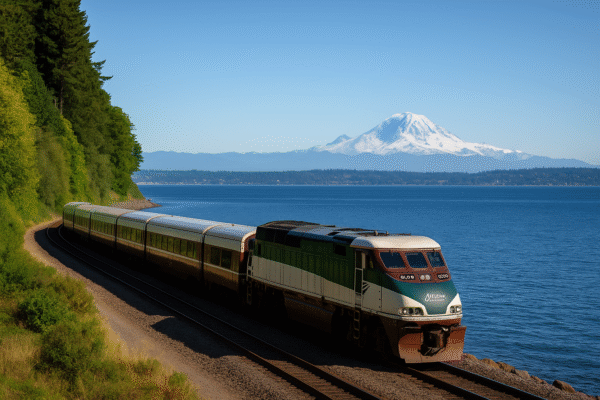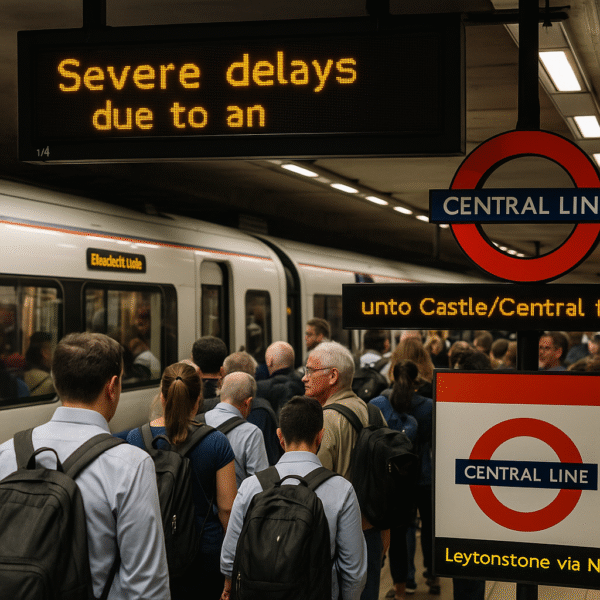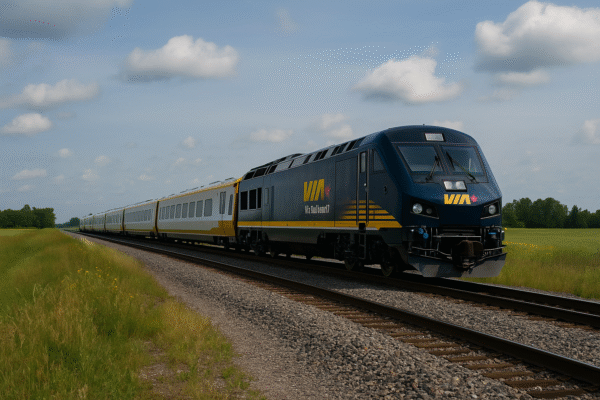New York City is bracing for a turbulent weekend as a dangerous mix of scorching temperatures, high humidity, and intense thunderstorms threatens to upend travel plans and outdoor activities through Saturday, July 19, 2025. The National Weather Service (NWS) has issued advisories for excessive heat and possible flash flooding, warning tourists and residents alike to take precautions during one of the hottest and most volatile periods of the summer.
According to the NWS, Saturday’s temperatures are expected to soar above 90°F (32°C), with humidity levels pushing the heat index past 100°F (38°C). These extreme conditions pose significant health risks, particularly for vulnerable populations such as children, older adults, and individuals with chronic illnesses.
On top of the heat, a volatile weather system is expected to generate strong thunderstorms across the city and surrounding boroughs. The storms may bring short bursts of torrential rain, leading to localized flash flooding—especially in flood-prone areas such as Brooklyn, Queens, and parts of Lower Manhattan.
Thunderstorms, Lightning, and Flash Flood Risks: What Travelers Need to Know
The NWS has flagged the potential for flash flood watches to be upgraded to warnings, especially if rainfall rates exceed 1 to 2 inches per hour. Travel delays are expected across airports, including JFK, LaGuardia, and Newark Liberty, as well as disruptions on the MTA subway system and regional Amtrak lines.
Severe thunderstorms could also lead to dangerous lightning strikes, downed power lines, and short-term blackouts. Travelers should avoid outdoor attractions during storm warnings and monitor weather updates through trusted sources, including NYC Emergency Management and the NWS.
Flash flooding is a particular concern in underpasses, poorly drained intersections, and low-lying waterfront areas along the Hudson River, East River, and Staten Island’s shoreline. Even brief periods of heavy rain can overwhelm drainage systems, making it dangerous to walk or drive through submerged streets.
Urban Heat Island Effect: NYC’s Concrete Jungle Amplifies the Heat
New York City is especially vulnerable to high temperatures due to the “urban heat island” (UHI) effect. The concentration of concrete buildings, asphalt roads, and limited green space causes heat to be absorbed and trapped, raising temperatures in Manhattan and the outer boroughs significantly higher than nearby rural or suburban areas.
The NYC Mayor’s Office of Sustainability warns that inner-city temperatures can be 7–10°F higher than surrounding areas, with neighborhoods like Harlem, East New York, and the South Bronx among the hardest hit. This magnifies health risks and places pressure on the city’s cooling infrastructure, including air-conditioned public spaces and emergency shelters.
Visitors and residents are urged to take advantage of NYC’s free “Cooling Centers,” which the city activates during heat emergencies. These are public buildings such as libraries, community centers, and senior centers that remain open to provide relief from the sweltering conditions.
Travel Disruptions and Safety Tips for Tourists
Tourists visiting New York this weekend should adjust their travel plans to avoid peak heat hours (typically 11 a.m. to 4 p.m.) and thunderstorms expected in the afternoon and evening. Museums, indoor attractions, and climate-controlled venues offer safer alternatives for sightseeing.
Key safety recommendations include:
- Stay Hydrated: Carry a refillable water bottle and avoid alcohol or caffeine, which can accelerate dehydration.
- Dress Appropriately: Wear loose-fitting, light-colored clothing, and use hats and sunscreen.
- Monitor Weather Alerts: Stay updated via the NWS website, the Notify NYC app, and local news stations like NY1.
- Avoid Flooded Areas: Never walk or drive through standing water—just six inches can knock over a person, and one foot can sweep away a vehicle.
- Prepare an Emergency Kit: Especially for hotel stays, have essentials such as flashlights, non-perishable food, first-aid supplies, and extra phone chargers ready in case of power outages.
- Use Public Transport Safely: Be prepared for potential subway delays due to track flooding or power disruptions. Check the MTA app for live updates.
What Comes Next? A Temporary Cooldown Followed by More Heat
Meteorologists expect some relief starting Monday, July 21, when a cold front moves through the Tri-State area, bringing lower humidity and cooler temperatures. Dew points are forecast to drop into the low 50s, providing a brief respite from the oppressive heat.
However, the reprieve is expected to be short-lived. Long-range forecasts suggest that high temperatures and humidity may return by mid-week, with the potential for another round of severe thunderstorms before July ends.
NYC Weather Preparedness: Resources for Tourists and Locals
For real-time weather updates, travelers should refer to:
- National Weather Service (weather.gov/nyc)
- NYC Emergency Management (NYC.gov/emergencymanagement)
- Notify NYC App for localized alerts
- 311 NYC for heat-related services and cooling center locations
The Office of Emergency Management (OEM) is also coordinating citywide response efforts, including the deployment of emergency personnel and public awareness campaigns to ensure visitor and resident safety.
Conclusion: Travel Smart, Stay Safe
With high heat, thunderstorms, and flash flood warnings in effect, New York City’s weekend weather is shaping up to be both challenging and potentially hazardous. While the city remains open to tourism, visitors should prioritize safety, monitor weather conditions, and adapt their plans accordingly.
As the climate continues to generate more intense and frequent weather extremes, staying informed and proactive will be key to ensuring that both locals and tourists can enjoy all that the city has to offer—safely and responsibly.
Whether you’re walking through Central Park, exploring Times Square, or visiting iconic landmarks like the Empire State Building, remember: staying cool, dry, and alert can make all the difference during a stormy New York summer weekend.
For more travel news like this, keep reading Global Travel Wire




